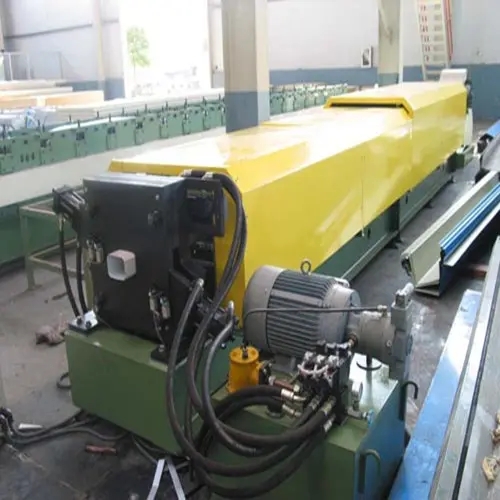
The Importance of Strut Channel Roll Forming Machines
In the world of metalworking and construction, efficiency and precision are paramount. One of the most revolutionary tools that has emerged to meet these demands is the strut channel roll forming machine. This specialized equipment is designed to produce strut channels—a type of structural framing commonly used in construction—to exact specifications, ensuring that each piece meets the durability and quality required for various applications.
What is a Strut Channel?
Strut channels, also known as slotted channels or framing channels, are metal structures that provide support for a variety of applications, including electrical conduits, plumbing, and HVAC systems. They can be made from different metals, though steel is the most common due to its strength and resilience. The channels are characterized by their C shape, which allows for easy attachment of components and fixtures.
How Does a Roll Forming Machine Work?
A strut channel roll forming machine utilizes a continuous process to shape metal into the desired channel profile. It consists of a series of rollers, each designed to progressively bend the metal sheet into the final shape. The efficiency of this process lies in its ability to produce long lengths of channels with minimal waste. The machine feeds a flat metal strip into the rollers, which gradually form the metal into a channel shape. The formed channels can then be cut to size at the end of the line.
Benefits of Using a Roll Forming Machine

1. Cost Efficiency One of the most significant advantages of using a strut channel roll forming machine is the reduction in production costs. The continuous nature of the process allows manufacturers to produce large volumes of strut channels quickly. This efficiency leads to lower labor costs and reduced material waste.
2. Precision Engineering Roll forming machines are known for their ability to maintain precise tolerances. This precision is crucial in construction and engineering applications where structural integrity is fundamental. With automated controls, manufacturers can achieve consistent results, reducing the risk of errors associated with manual processes.
3. Versatility Strut channel roll forming machines can be adjusted to produce various channel sizes and configurations. This versatility allows manufacturers to cater to specific customer demands and adapt to changing market needs.
4. Durability and Strength The channels produced by roll forming machines possess superior strength and structural integrity. The cold-forming process enhances the mechanical properties of the metal, making it resistant to deformation and wear over time. This durability is essential in construction applications where safety and reliability are paramount.
5. Custom Solutions Many roll forming machines are designed to accommodate custom specifications. Manufacturers can create unique channel profiles or integrate additional features like holes or accessories directly during the forming process, minimizing the need for post-production modifications.
Conclusion
Strut channel roll forming machines have become invaluable tools in the construction and metalworking industries. Their ability to produce high-quality, precise strut channels efficiently has revolutionized the way metal components are manufactured. As the demand for prefabricated solutions continues to grow, the role of roll forming machines will likely expand, offering even more innovative and tailored solutions for builders and manufacturers alike. By embracing this technology, the industry is poised to achieve greater levels of efficiency, cost-effectiveness, and quality in its products, ultimately contributing to safer and more reliable construction practices.